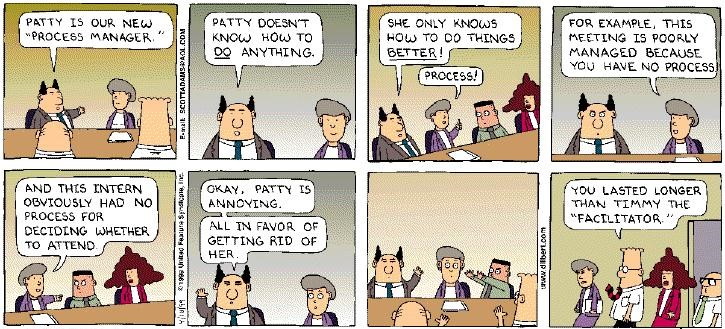Why Remote Meetings Are So Difficult for Risk Assessment, and What You Can Do About It

In a previous article, we discussed risk management in the age of COVID. We talked about the need for adequate risk assessments and briefly touched on RISKID’s collaborative software solution.
Then the world began opening up again. People returned to their offices, gatherings of more than 15 people became a reality, and unicorns circled the globe spreading rainbows and happiness.
And what did we learn? 2020 wasn’t finished with us after all, and those that hadn’t included a rebounding of the virus in their risk assessments were in for a rude awakening. For all of its faults, and there are too many to count, 2020 has shown us that even the most rigorous assessments can miss the mark. This means it behooves us all to try and get it right to the best of our ability, knowing that there may yet be risks we can’t factor for.
And to get it right, we need thorough, deliberate collaboration, which isn’t particularly easy given our present circumstances. This article will focus more closely on the challenges risk managers are facing now that in-person meetings are once again becoming deeply problematic.
So what’s a forlorn risk professional to do? Read on.
Remote Meetings are a Massive Pain
If we’re honest, meetings have always had problems. Unless your session has a skilled facilitator and some sort of structure, participants tend to talk over each other. Thoughtful individuals that prefer to carefully consider what they’re going to say before speaking generally get snowballed by loudmouths happy to spool out a torrent of words at the first break of silence. Type A’s tend to dominate, and other voices with potentially important contributions get silenced.

In short, collaboration is difficult even in the best of circumstances.
Remote meetings exacerbate these problems and throw in a few fresh ones to boot. There are several reasons for this, but technical impediments top the list.
Imagine a quiet, thoughtful contributor looking for an opening to speak. After patiently waiting, hoping the topic doesn’t stray too far from their point before a break comes, they find their moment. They launch into a well-reasoned explanation for a specific risk the organization faces, but they forget to turn on their mic. Before they know it, Bob from Accounting is taking the floor, closing their window.
@#$% Bob. We hate that guy.
But these are the sorts of issues that organizations face in remote meetings. Slow internet connections can make the process painful. The inability to see every participant means it’s harder to rate reactions as you speak.
Camera problems. Microphone issues. Disembodied children’s voices screaming off-camera (likely Bob forgetting to mute his mic, as usual.) These problems don’t exist in traditional physical meetings, and they whittle away at the effectiveness of distanced gatherings.
This Is Bad News for Risk Assessment Meetings
In a standard meeting, these issues can be hassles, but they aren’t necessarily deal-breakers. No one cares if Bob wants to blather on for half the meeting because it means they can keep daydreaming about lunch. But all of the problems mentioned so far are telescoped during risk assessment meetings because full group participation is a requirement.
Risk managers can’t afford for half the total participants to remain quiet, either because they can’t find an opening or they’re just not comfortable talking to a computer screen. Risk assessments are deeply collaborative. The more perspectives that can be included, the better the results. Remote meetings tend to squelch rather than foster full collaboration.
At first blush, it would seem that risk management professionals are faced with an impossible irony — blocked from adequately discussing the very risks that are actively blocking their discussions. But there is an answer, and it comes in two parts.
Ease Remote Collaboration Challenges With Facilitation
Most meetings, whether live or remote, are organized as a caucus. We use the word “organized” loosely here because a caucus has no organization at all. It’s essentially a free for all. There are no rules dictating who can talk, when, or for how long, and so the loudest, most strident voices usually win.
Moving away from caucus-style meetings for risk management is the first step in making remote sessions work for you. To do that, the risk manager sponsoring a conference must act as a facilitator.

Facilitators act as an impartial third-party tasked with making sure that no one dominates a meeting. They also plan agendas and help guide conversations, working to keep them on task without overly influencing the content under discussion.
Facilitation is critical for risk assessments because it resolves many of the problems with remote meetings. Facilitators make sure that every voice is heard. When clarification is necessary, they make sure to get it. When conversation stalls, they ask questions to get the meeting back on track. They monitor participation to make sure that useful perspectives make it into the discussion.
However, the practice has its limitations. If someone doesn’t want to participate or isn’t comfortable speaking up, there’s little a facilitator can do. They can encourage group participation, but they can’t force it. What’s needed is a tool designed specifically for remote risk assessment meetings that makes it easy for even the shyest group members to get involved. One that amplifies a facilitator’s strengths while bolstering their weaknesses.
RISKID Is That Tool
Group support systems, or GSS tools, are commonly too general to handle the rigors of risk assessment. You likely already use some of these — Teams, Zoom, and GoToMeeting are the most common. These are software solutions designed to support group collaboration.
But really, they’re nothing more than a virtual conference room. They can support any sort of meeting but don’t provide tools for specific types of meetings. And they’re better for some than others.
RISKID takes the opposite strategy. It’s built specifically for risk assessment. It would be a terrible tool for planning a virtual bake sale or holding an online zoning meeting, but it’s BRILLIANT for getting groups deeply involved in risk management.
For one, its structured approach makes it painless and straightforward for every participant to add risks to the list, broach causes and effects, and rate risk likelihoods and possible impacts. You don’t have to worry about people being left out. The software makes sure everyone participates, and every perspective counts.
A powerful algorithm under the hood aids facilitators in focusing on the risks that need more work, reducing meeting lengths, and creating efficient discussions.
Ask yourself this. If you had to build a house, would you use a swiss army knife? Like Teams or Zoom, it’s a general tool that supports multiple functions. But it doesn’t do any of them particularly well. Who can cut with those tiny little scissors? Instead, you’d choose tools explicitly designed for home construction.
Risk assessment is your home. Choose your tools wisely.
